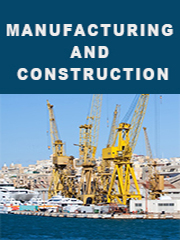Report overview
Reconfigurable educational robots are robots that can be configured physically into different form factors with minimal programming or by joining together various elements of the robot.
Reconfigurable educational robots show the promise of great versatility, robustness and low cost. It is a modular, self-reconfigurable system that is being used to explore the hardware reality of a robot with a large number of interchangeable modules.
The scope of the report mainly includes reconfigurable educational robotic and the whole kits that are to be configured in various patterns.
This report aims to provide a comprehensive presentation of the global market for Reconfigurable Educational Robots, with both quantitative and qualitative analysis, to help readers develop business/growth strategies, assess the market competitive situation, analyze their position in the current marketplace, and make informed business decisions regarding Reconfigurable Educational Robots. This report contains market size and forecasts of Reconfigurable Educational Robots in global, including the following market information:
Global Reconfigurable Educational Robots Market Revenue, 2018-2023, 2024-2029, ($ millions)
Global Reconfigurable Educational Robots Market Sales, 2018-2023, 2024-2029, (Units)
Global top five Reconfigurable Educational Robots companies in 2022 (%)
The global Reconfigurable Educational Robots market was valued at US$ 35 million in 2022 and is projected to reach US$ 199.5 million by 2029, at a CAGR of 28.2% during the forecast period. The influence of COVID-19 and the Russia-Ukraine War were considered while estimating market sizes.
Global Reconfigurable Educational Robots key players include Lego, Makeblock, Fischertechnik, etc. Global top three manufacturers hold a share over 55%.
North America is the largest market, with a share about 40%, followed by Europe and China, both have a share over 45 percent.
In terms of product, Humanoid Robots is the largest segment, with a share over 55%. And in terms of application, the largest application is Primary School, followed by Secondary School.
We surveyed the Reconfigurable Educational Robots manufacturers, suppliers, distributors and industry experts on this industry, involving the sales, revenue, demand, price change, product type, recent development and plan, industry trends, drivers, challenges, obstacles, and potential risks.
Total Market by Segment:
Global Reconfigurable Educational Robots Market, by Type, 2018-2023, 2024-2029 ($ Millions) & (Units)
Global Reconfigurable Educational Robots Market Segment Percentages, by Type, 2022 (%)
Wheeled Robots
Humanoid Robots
Global Reconfigurable Educational Robots Market, by Application, 2018-2023, 2024-2029 ($ Millions) & (Units)
Global Reconfigurable Educational Robots Market Segment Percentages, by Application, 2022 (%)
Primary School
Secondary School
Others
Global Reconfigurable Educational Robots Market, By Region and Country, 2018-2023, 2024-2029 ($ Millions) & (Units)
Global Reconfigurable Educational Robots Market Segment Percentages, By Region and Country, 2022 (%)
North America
US
Canada
Mexico
Europe
Germany
France
U.K.
Italy
Russia
Nordic Countries
Benelux
Rest of Europe
Asia
China
Japan
South Korea
Southeast Asia
India
Rest of Asia
South America
Brazil
Argentina
Rest of South America
Middle East & Africa
Turkey
Israel
Saudi Arabia
UAE
Rest of Middle East & Africa
Competitor Analysis
The report also provides analysis of leading market participants including:
Key companies Reconfigurable Educational Robots revenues in global market, 2018-2023 (Estimated), ($ millions)
Key companies Reconfigurable Educational Robots revenues share in global market, 2022 (%)
Key companies Reconfigurable Educational Robots sales in global market, 2018-2023 (Estimated), (Units)
Key companies Reconfigurable Educational Robots sales share in global market, 2022 (%)
Further, the report presents profiles of competitors in the market, key players include:
Lego
Makeblock
Fischertechnik
Modular Robotics
Innovation First International
Robotis
Pitsco
Evollve
Parallax
Cytron Technologies
Wonder Workshop
Outline of Major Chapters:
Chapter 1: Introduces the definition of Reconfigurable Educational Robots, market overview.
Chapter 2: Global Reconfigurable Educational Robots market size in revenue and volume.
Chapter 3: Detailed analysis of Reconfigurable Educational Robots manufacturers competitive landscape, price, sales and revenue market share, latest development plan, merger, and acquisition information, etc.
Chapter 4: Provides the analysis of various market segments by type, covering the market size and development potential of each market segment, to help readers find the blue ocean market in different market segments.
Chapter 5: Provides the analysis of various market segments by application, covering the market size and development potential of each market segment, to help readers find the blue ocean market in different downstream markets.
Chapter 6: Sales of Reconfigurable Educational Robots in regional level and country level. It provides a quantitative analysis of the market size and development potential of each region and its main countries and introduces the market development, future development prospects, market space of each country in the world.
Chapter 7: Provides profiles of key players, introducing the basic situation of the main companies in the market in detail, including product sales, revenue, price, gross margin, product introduction, recent development, etc.
Chapter 8: Global Reconfigurable Educational Robots capacity by region & country.
Chapter 9: Introduces the market dynamics, latest developments of the market, the driving factors and restrictive factors of the market, the challenges and risks faced by manufacturers in the industry, and the analysis of relevant policies in the industry.
Chapter 10: Analysis of industrial chain, including the upstream and downstream of the industry.
Chapter 11: The main points and conclusions of the report.
